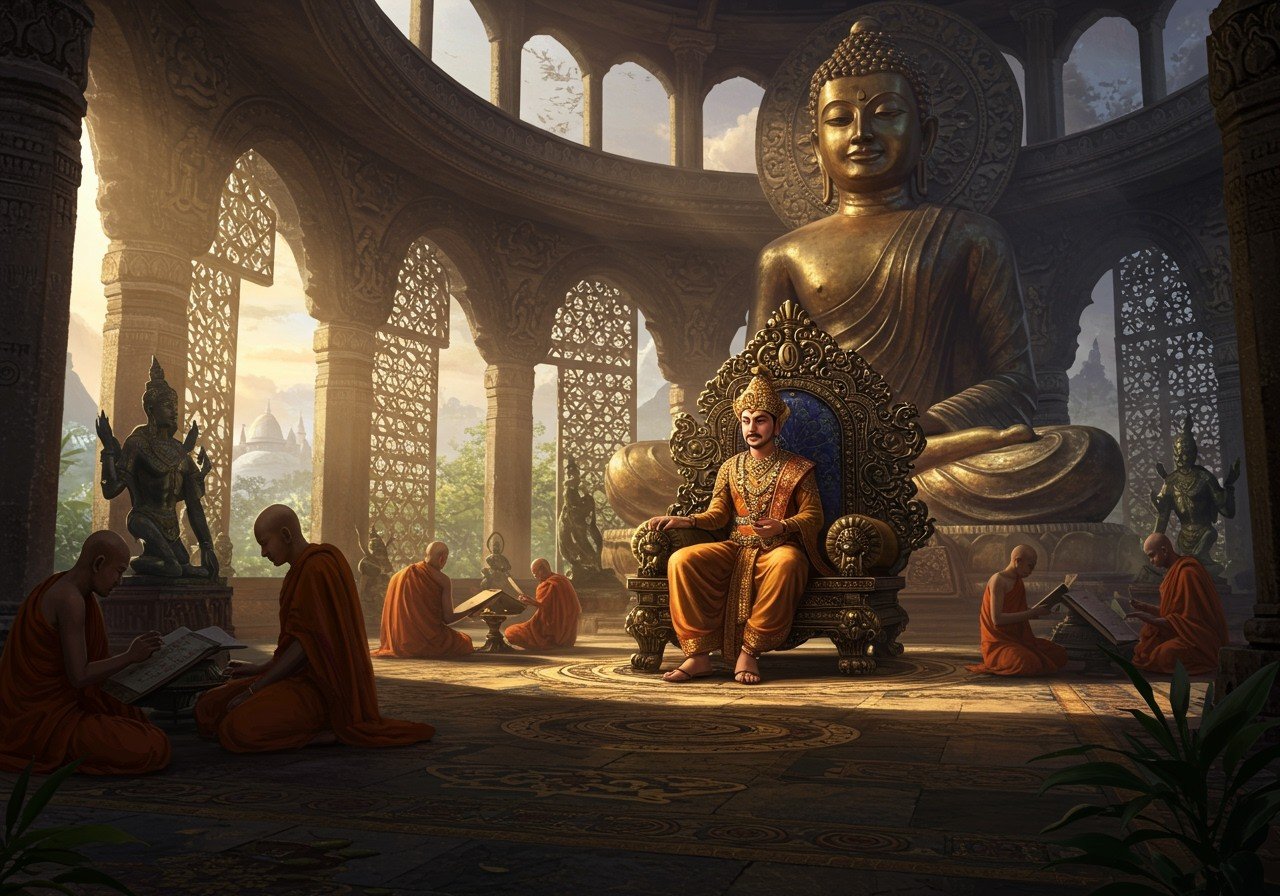
The Pala Empire, a prominent dynasty in Indian history, reigned from the 8th to the 12th centuries CE across Bengal and Bihar. Renowned for their patronage of the arts, religious pursuits, and educational advancements, the Palas significantly shaped the cultural and political landscape of medieval India. This article delves into the Pala Empire’s remarkable contributions to art, religion, and political power, offering a comprehensive overview of their enduring legacy.
Historical Overview
Understanding the Pala Empire’s rise to power is essential. Founded by Gopala around 750 CE, the dynasty expanded its influence under Dharmapala and Devapala. Key battles and strategic alliances solidified their control over Eastern India. Administrative reforms and diplomatic initiatives helped the Palas maintain their dominion amidst the socio-political challenges posed by rival dynasties like the Pratiharas and Rashtrakutas.
Economic Foundations of the Pala Empire
The Pala Empire’s economic prosperity fueled its strength. Agriculture formed the backbone of their economy, with irrigation systems and diverse crops playing vital roles. The Palas cultivated extensive trade networks, connecting with Southeast Asia and the Arab world. These routes facilitated cultural exchange and economic growth. Analysis of Pala coinage reveals their economic strategies, and the role of guilds and merchant communities further enriched their economic landscape.
Art and Architecture of the Pala Dynasty
The Palas are celebrated for their unique contributions to art and architecture. Pala sculptures, renowned for intricate details and spiritual themes, include remarkable bronze and stone depictions of Buddha and Bodhisattvas. Monasteries (viharas) and temples (stupas) exemplify the architectural styles of the period. Pala art significantly influenced later Indian and Southeast Asian artistic traditions. The Palas’ mastery of bronze casting and stone carving showcases their artistic prowess.
Religious Influence of the Pala Empire
Religion was deeply ingrained in Pala society, influencing their policies and culture. The Palas were patrons of Buddhism, especially Mahayana and Vajrayana traditions. They established renowned Buddhist centers like Vikramashila and Nalanda universities, contributing to Buddhism’s revival and spread across India and beyond. Other faiths, including Hinduism and Jainism, coexisted peacefully under Pala rule. Buddhist scholars under Pala patronage produced significant literary and philosophical works.
Language and Literature During the Pala Era
The Palas significantly advanced language and literature in medieval India. Sanskrit and Pali served as the principal languages for administration, scholarship, and religious discourse. These languages flourished under Pala rule, witnessing the creation of numerous literary works, including Buddhist texts, poetry, and philosophical treatises, reflecting the era’s intellectual vibrancy. The Palas’ patronage played a crucial role in preserving and disseminating classical Indian literature, with scholars and poets at the Pala court making notable contributions.
Political Power and Administration
The Pala Empire’s political strategies and administrative systems were instrumental to their influence. A hierarchical structure, from the central government to local officials, ensured effective governance. The king and his court played a central role in decision-making. Military strategies and innovations defended and expanded their territories. Diplomatic relationships and alliances with neighboring and foreign powers were carefully cultivated, contributing to social and economic stability and a prosperous reign.
Poojn.in: Connecting to the Pala Legacy
Poojn.in, India’s leading store for cultural and religious items, offers products that resonate with the Pala Empire’s rich Buddhist heritage. Explore our collection of statues, incense, and other sacred items that connect you with this significant historical period. Poojn.in is your one-stop shop for authentic and high-quality cultural goods, allowing you to experience and appreciate the legacy of the Pala Empire.
Conclusion
The Pala Empire’s influence on medieval India is undeniable, particularly in language, literature, and political administration. Their patronage of Sanskrit and Pali enriched India’s cultural heritage. Their effective governance ensured stability and prosperity. The Pala Empire’s legacy endures, reminding us of the importance of preserving our rich cultural traditions. For those seeking to connect with this vibrant historical period, Poojn.in offers a curated selection of relevant products to deepen your understanding and appreciation of the Pala Empire’s profound contributions.
Kandariya Mahadeva Temple
Badami Cave Temples
Bhoganandishwara Temple


